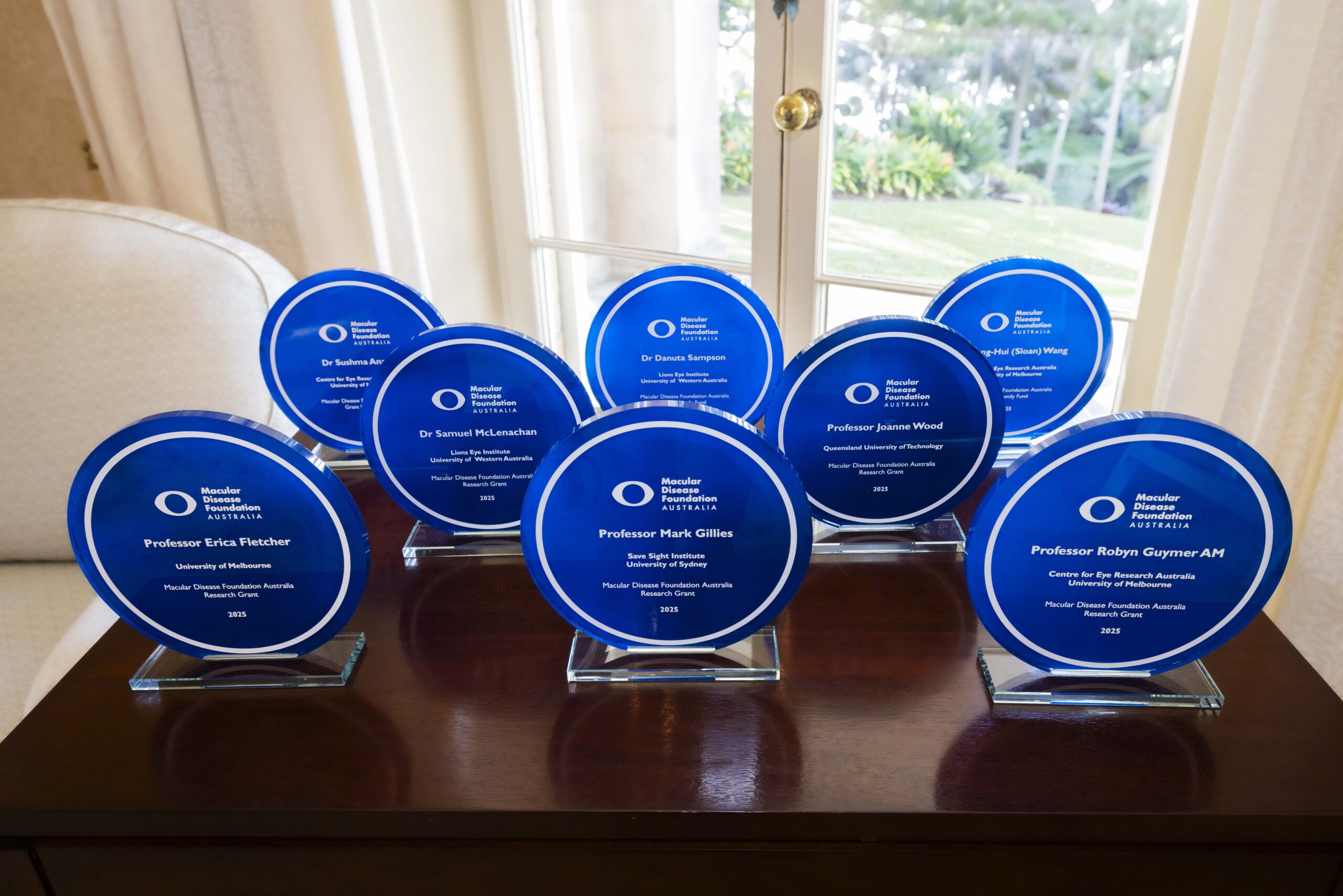Identifying the differences between healthy and diseased cells
The retinal pigment epithelium (RPE) is a layer of cells beneath the retina. When RPE cells die, so do the retinal cells above them, leading to patches of missing retina – or geographic atrophy (GA).
Professor Alice Pébay’s MDFA-funded project explored the genetic pathways leading to GA using patients’ own cells, creating a bank of stem cells that researchers across the globe can now access to investigate potential new treatments for GA, or dry AMD.
This collaboration between the University of Melbourne, the University of Tasmania, the Garvan Institute for Medical Research and the Centre for Eye Research Australia generated and used induced pluripotent stem cells (iPSCs) – cells that can become any type of cell in the body – from 60 AMD patients and 60 control individuals, and made them become retinal cells.
Prof Pébay’s team then used this large iPSC cell bank to identify the genetic differences between the healthy cells and the disease cells, which can now be used to develop new targets for potential treatments of dry AMD.
Prof Pébay was awarded an NHMRC Senior Research Fellowship in 2019, with a research program that includes the project funded by MDFA.
Along with her collaborators, Prof Pébay has also secured support from the Medical Research Future Fund’s Stem Cell Therapies Mission and a 2021 grant from the Ophthalmic Research Institute of Australia. These projects will use the iPSC cell bank to screen for the impact of FDA-approved molecules on the formation of drusen-like deposits in a dish, and to assess the proteomic profile of the iPSC samples, respectively.
Prof Pébay’s research shows how MDFA’s initial investment can snowball into significant advancements in the field of macular research.
When she was awarded the grant, Prof Pébay sat down with us to discuss what motivated her research, and what she loved about her job.
Posted: June 2021. This article was first published in 10 Years of Impact: Reflecting on the impact of investing into macular disease research.

















